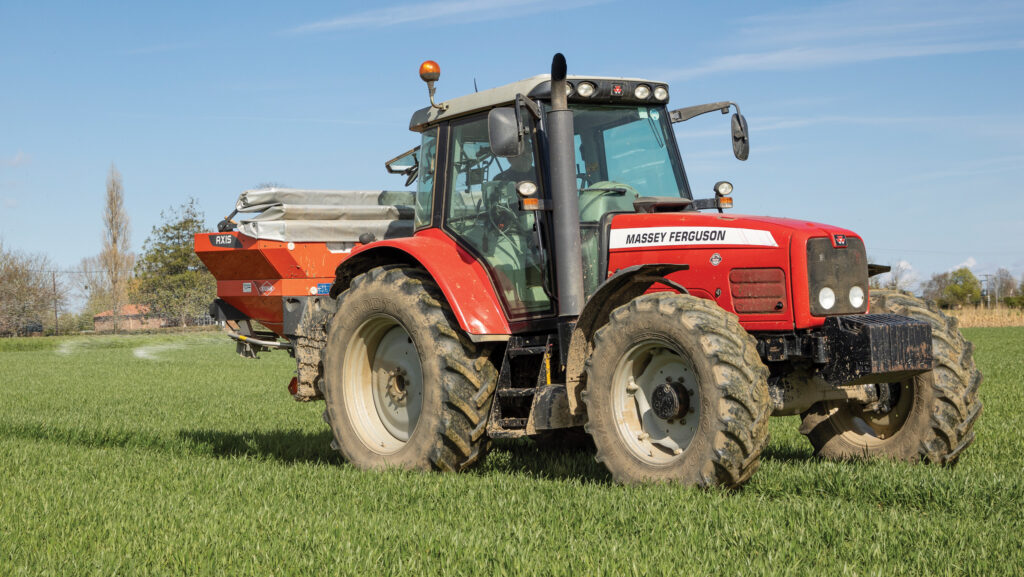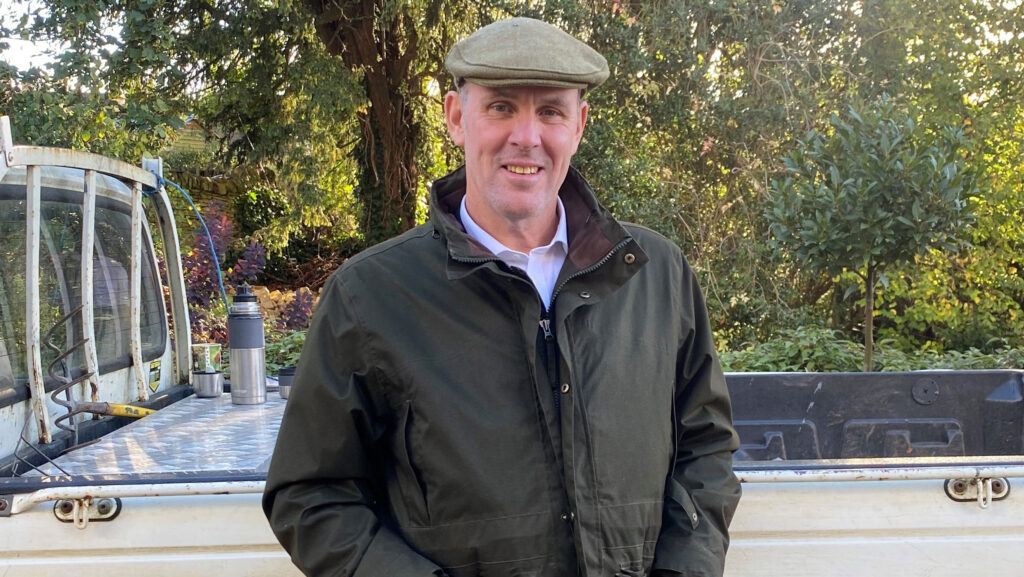How microbial seed dressing helps cut nitrogen fertiliser
 © GNP
© GNP An increasing number of farmers are looking to cut their reliance on bagged nitrogen fertiliser, and trials suggest a microbial seed treatment could help them achieve this without affecting cereal yields.
The spike in fertiliser prices seen in 2021-22, an impending carbon tax on imported N products and environmental pressures have all fuelled interest in finding ways of reducing fertiliser use on farms.
There are a range of actions that farmers can take, including making more use of organic manures, using fertility-building clover leys and tweaking rotations to drop nitrogen-hungry crops such as milling wheat.
See also: Expert tips on managing very variable crops this spring
Technology can also have a role, with tissue testing enabling better matching of applications to crop needs and, more recently, biostimulants aimed at fixing nitrogen and improving nutrient use efficiency.
Biostimulant trial
One such biostimulant has been trialled in East Anglia by agronomist Edward Maule of Deben Agronomy for four years – and he has seen a consistent trend in both winter and spring cereals.
His work suggests that the Gramax NP microbial seed dressing made by Biolevel and marketed by CertisBelchim can safely replace 20% of a standard fertiliser input without adversely affecting yields.

Agronomist Ed Maule – photo supplied by Ed Maule
Edward started investigating the seed dressing applied to certified seed supplied to farmers.
While his initial interest was in its ability to mobilise phosphate, his aim was to see if there was any scope to reduce artificial nitrogen fertiliser inputs while maintaining yields.
The tramline trials started in 2022 and the same three treatments were adopted over three seasons in a range of cereal crops:
- Standard nitrogen application
- Standard nitrogen application plus seed treatment
- Reduced nitrogen (-20%) plus seed treatment.
In Cochise spring wheat, the seed treatment and reducing N from 150kg/ha to 120kg/ha resulted in a yield increase of +0.81t/ha.
When using the seed treatment with the standard fertiliser rate, the difference increased to +1.26t/ha.
In a separate trial with Laureate spring barley on sandy loam, he saw a +0.23t/ha difference when reducing fertiliser from 125kg/ha to 100t/ha and this increased to +0.87t/ha for the standard fertiliser rate plus seed treatment.
Planet spring barley was also trialled, and while the differences were smaller, there was the same trend.
The next season (harvest 2023) saw further work in spring cereals along with the addition of winter wheat and winter barley.
In a high-yielding (9t/ha) crop of Gleam, reducing nitrogen and using the seed treatment saw a +0.44t/ha yield difference and at a full fertiliser rate, this increased to +1.26t/ha.
A similar result was seen in Caravelle winter barley.
Then in 2024, Edward looked to see if it was possible to cut nitrogen by 30% in Laureate, but he concluded that 20% was the sweet spot.
“Reducing fertiliser from 120kg/ha to 84kg/ha led to a -0.05t/ha yield reduction, which suggested we were pushing levels too far. It was the same in Cochise spring wheat.”
Three years of trials
In conclusion, three years of trials across different soils in Norfolk, Suffolk and Essex showed that Gramax NP offers farmers the ability to reduce their nitrogen fertiliser applications and achieve the same yield, if not a slight uplift.
Alternatively, farmers can stick with the regular nitrogen input and get an uplift in yield.
Edward points out that the results were consistent, with the same trend seen over seasons and crops.
“In the past, consistency has been a challenge when using biostimulants, but with Biolevel Ltd, we are seeing consistency.”
In addition, for malting barley, there was no difference in grain nitrogen, which is important given the grain nitrogen limits for maltsters.
The trials continue this year, with Gramax NP being compared with other endophyte products.
Case study: Peter Bartlett, Cleeves Farm Estate, Oxfordshire

Peter Bartlett – photo supplied by Peter Bartlett
A key priority for Oxfordshire grower Peter Bartlett is to move towards a more sustainable farming system on his 160ha arable farm by using less artificial nitrogen fertiliser.
He has spent three years looking at alternatives to synthetic nitrogen. which he hopes will enable soils to regenerate and become more productive.
Overall farm fertiliser use has been cut by about 30%, with certain crops being reduced by up to 50%.
This has been achieved through several changes at Cleeves Farm Estate, a key one being the introduction of fertility-building clover leys to fix nitrogen in the soil.
He has also tweaked the rotation, growing fewer crops that require higher nitrogen rates.
Another change is the use of a microbial seed treatment to replace some of the synthetic nitrogen. Peter first tried it in a crop of January 2022-sown Skyfall second winter wheat.
In a field-scale trial, he compared his usual farm practice with a reduced level of nitrogen plus GramaxNP and a seaweed product sprayed in early spring.
Both parts of the field had a starter fertiliser of 50kg/ha of N. The farm standard then had an additional 55kg/ha of nitrogen applied during spring.
The Biolevel part had no other additional applications.
While it wasn’t a high-yielding site on Cotswold brash soil, the final yield from both treatments was similar, according to Peter.
“The Biolevel treatment yielded about 95% of the normal farm standard.”
The trial was repeated the following year with similar results. It is currently used on about 50% of the farm and he is hoping to increase this next year.
However, he admits that he won’t know if his approach is enabling soils to regenerate for at least five years or more.
“The benefits are long term”, so time is needed before assessing the full effects, he says.
Microbial biofertiliser: What is Gramax NP?
The microbial seed treatment contains a diverse mix of bacteria which have been selected to improve the efficiency of N, P and K use by crops.
Developed by Biolevel in partnership with CertisBelchim, what makes the product unique is that it mixes eight different strains, while most other biological products contain a single strain, explains co-founder Laurence Berman.
This, combined with being in a stable form, is the reason behind its consistent results, he says.
Different strains shine in different conditions (soils and climate), and that’s why you need different strains, he says.
“Soil is a complex environment, and we have seen many times soils saturated with water and no one strain would deliver nitrogen fixing in soil with no oxygen.”
The mix also contains microbes that solubilise the unavailable P and K in soil, and these nutrients help plants respond to the extra nitrogen, says Lutz Glandorf, co-founder of Biolevel.
For example, P helps root development of the plant, and better roots mean better N uptake, water uptake and drought tolerance.
Effectively mobilising the P and K can help shift the nitrogen response curve upwards, resulting in either more yield or maintained yield with less N, he explains.
Stable form
In the past, microbial products have not been stable and have had a narrow use window after being mixed.
So the company has developed a liquid seed treatment that can be used straight from the container and does not need to be refrigerated.
“Farmers can also treat seed well in advance of drilling and use existing seed dressing equipment,” says Laurence.
Historically, biologicals have contained live bacteria in a powder form and, once mixed, they have to be used within 6-12 hours – and in a precise way.
“Just get one thing wrong and farmers end up with dead microbes,” he says.
The product is stabilised with the bacteria in a dormant state. Consequently, the treatment can stay on seed for months and remain viable.
This results in greater consistency and he believes this will make it more attractive to mainstream growers.

